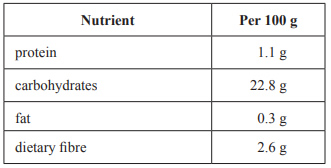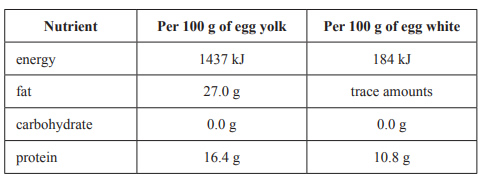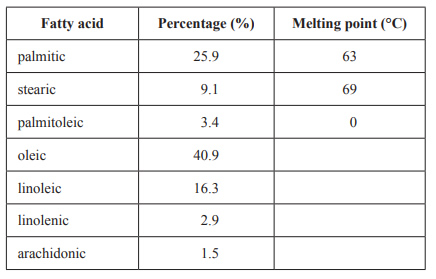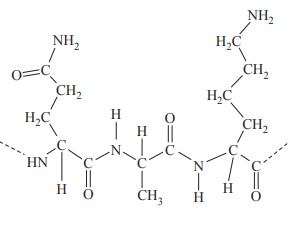1) Bananas provide essential vitamins and minerals, such as vitamin B6 and vitamin C, along with dietary fibre and energy. During the ripening process, the banana changes in appearance, texture and taste. A ripe banana contains a high amount of glucose, whereas an unripe banana contains up to 80% starch.
a. Write a balanced equation for cellular respiration.
b. The structure of a disaccharide found in a ripe banana is shown below.

i. On the structure above, circle and name the link that joins the two sugar units that make up the disaccharide.
ii. Name the two sugar units that make up this disaccharide.
iii. Banana skins are primarily composed of cellulose. Suggest why cellulose cannot be used as a source of energy in the human body.
Solution

2) The table below shows the amount of each nutrient in 100 g of banana.

a. An athlete uses 300 kJ of energy for a five-minute run. A typical ripe banana has an average mass of 116 g after it is peeled. How many typical ripe bananas, correct to two decimal places, would the athlete need to consume to replace the energy used during the run? Show your working.
b. During the ripening process, the enzyme amylase breaks down starch molecules into disaccharides and monosaccharides.
i. What name is given to this type of reaction?
ii. The amino acid lysine is present in the primary sequence of amylase. Draw the structural formula for the amino acid lysine in a low-pH solution.
Solution

3) Inside the shell of an egg is egg white that encircles egg yolk. The nutrition information for egg yolk and egg white is given in the table below.

a. Poaching an egg involves cracking an egg and carefully placing the contents in a pan of hot water. This allows the egg white to solidify around the egg yolk. Using your knowledge of chemistry, explain why vinegar is sometimes added to the water to produce a poached egg with a runny yolk
Solution
b. The composition of fatty acids found in an egg yolk sample is given in the table below. The melting points for the first three fatty acids are provided.

i. The composition of fatty acids in an egg yolk was determined by reacting the fatty acids with methanol to produce methyl esters and then analysing the methyl esters using chromatography. Explain, using the principles of chromatography, how each fatty acid in the egg yolk sample can be identified and the percentage determined.
Solution
ii. Identify the fatty acid in the table above that would have the lowest flash point. Explain your answer in terms of both the:
• melting point trends shown in the table
• structure and bonding of the fatty acids
Solution

c. i. Give the molecular formula and the molar mass of the triglyceride formed from three palmitoleic acid molecules.
ii. Calculate the mass of iodine, I2, in grams, that reacts in an addition reaction with 100.0 g of the triglyceride formed from three palmitoleic acid molecules.
Solution

The diagram below represents a section of an enzyme.

4) The diagram can be described as a
A. secondary structure consisting of glutamine, glycine and lysine.
B. primary structure consisting of asparagine, glycine and lysine.
C. secondary structure consisting of asparagine, alanine and lysine.
D. primary structure consisting of glutamine, alanine and lysine.
Solution
